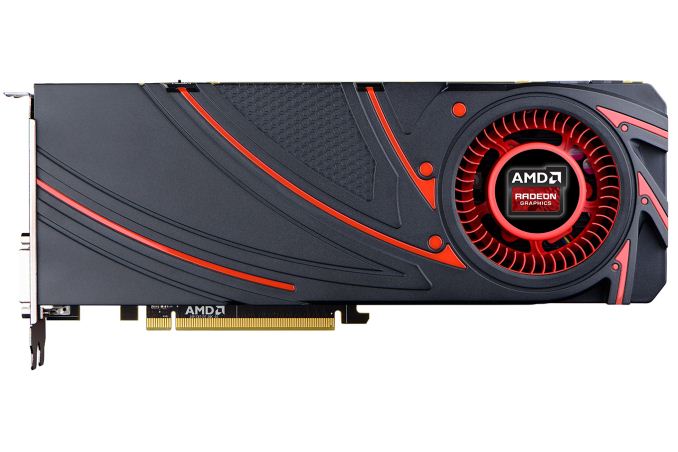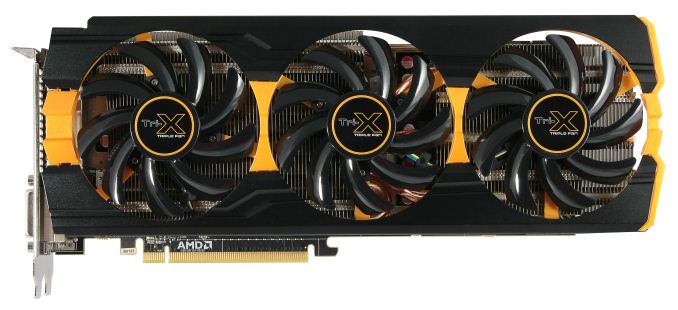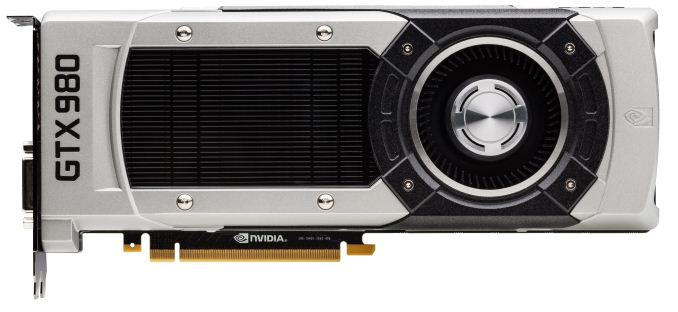AMD Radeon R9 290 Series Prices Finally Begin To Fall
by Ryan Smith on October 7, 2014 12:00 PM EST
With the launch of NVIDIA’s Maxwell-powered GeForce GTX 900 series last month, it was immediately obvious that NVIDIA had been able to deal a swift blow to AMD’s product lineup by surpassing AMD’s performance while significantly undercutting their pricing. At the time we were expecting AMD to quickly respond with the necessary price cuts to keep the R9 290 series competitive with the GTX 900 series, but surprisingly even a week later this had yet to happen.
Now a bit over two and a half weeks after the GTX 900 series launch, we’re finally seeing Radeon R9 290 series pricing fall in response to NVIDIA’s launch. AMD has not announced an official price cut at this time – and admittedly neither AMD nor NVIDIA tend to announce reactive price cuts – so it’s not clear whether this is AMD’s doing, board partner’s, retailers, or most likely all three. But regardless, retail video card prices at Newegg and other etailers have seen some substantial drops that help bring back at least some balance between AMD and NVIDIA’s high end video card lineups.
A number of Radeon R9 290 cards can now be found for around $300 after rebate, with a couple more factory overclocked models at $310. With HIS, Sapphire, PowerColor, Asus, and XFX represented, this is a broad selection of vendors with a bit less than half of Newegg’s stock now at or around $300. Meanwhile R9 290X can be found for $399, again with a wide selection of vendors and roughly half of Newegg’s stock at or near that price. The remainder of Newegg’s stock in turn generally consists of heavily overclocked or otherwise premium cards that carried their own price premium before these latest cuts.
Speaking of AMD card prices, it should also be noted that AMD’s Never Settle Forever bundle is still active even after this round of price cuts. AMD and their partners will be continuing to try to influence the value proposition of their products by including free games.
For AMD these price cuts don’t come a moment too soon, and while they are going to help the competitive landscape I’m not convinced this is the last time we’re going to see AMD cut prices. As we discussed in our review of the GTX 970, comparing stock-to-stock, the $329 GTX 970 is every bit as fast as the now $400 R9 290X. If AMD wants to be price/performance competitive with NVIDIA then there’s still an additional $70 price difference between the two cards, a gap further muddied by AMD’s game bundle and NVIDIA’s superior energy efficiency. Strictly speaking $400 may not be low enough for the R9 290X, but no doubt AMD wants to see what sales are like at $400 before cutting prices on their single-GPU flagship any further.
The R9 290 on the other hand is in an interesting spot. At resolutions below 2160p it trails the GTX 970 by around 10%, but then again at $300 it’s also priced about 10% lower. Since it ships at a lower clockspeed than R9 290X a lot of AMD’s partners also goose the core clock on R9 290, which improves performance a bit but isn’t enough to close that 10% gap. What it does mean however is that at least so long as energy efficiency is not a concern, R9 290 is appropriately priced for its performance. However if energy efficiency is a concern, then AMD doesn’t have any kind of counter to GM204 at this time.
If anything the one wildcard at this point is the availability of the new GeForce cards. Despite stock more-or-less holding up immediately post launch, we’ve seen both the GTX 980 and GTX 970 go out of stock in the last week. As of the time of this writing it looks like Newegg has received their Tuesday shipment, so there is stock available, but it’s a thin selection of just a few different cards (including a model or two at MSRP). For prospective buyers this means either playing inventory games or grabbing the AMD alternative, and for AMD this is all the more reason not to cut prices too drastically while GeForce availability is still limited. As for NVIDIA it’s been a while since we’ve seen them capacity constrained on the high end, so while it’s solid evidence that they’ve done everything right with the GTX 900 series launch, it does mean that they’re also going to be leaving sales on the table until supply and demand level out.
| Fall 2014 GPU Pricing Comparison | |||||
| AMD | Price | NVIDIA | |||
| Radeon R9 295X2 | $1000 | ||||
| $550 | GeForce GTX 980 | ||||
| Radeon R9 290X | $400 | ||||
| $330 | GeForce GTX 970 | ||||
| Radeon R9 290 | $300 | ||||
| Radeon R9 280X Radeon R9 285 |
$250 | ||||
| Radeon R9 280 | $200 | GeForce GTX 760 | |||
Source: The Tech Report












69 Comments
View All Comments
TiGr1982 - Saturday, October 11, 2014 - link
@ chisowOK, let it be 2X in case of GK104 vs GM204, if you really happy with this particular comparison (8 old SMXs vs 16 new SMMs and so on). I don't mind, eventually.
But, then, please try to stop calling other people idiots, "Turdga" and using other abusive language next time. This looks childish and disrespectful and tends people to end any discussions with such a poster.
BTW, I fully agree with you from the start regarding CPU side of things in the other recent thread here on AT devoted to AMD CEO change.
chizow - Friday, October 10, 2014 - link
The 285's opponent isn't just pricing, it's also performance. And why is this? Because it's not significantly better and in some cases *WORST* than its 3 year old predecessor, all at a higher price point. And this is the turd of a GPU you chose to defend, while trying to make backhanded comments about Maxwell, which gives unprecedented improvements in performance and efficiency on the same process node! LMAO.And what reversal are you talking about with regard to TDP and throttling? Did you not read the Maxwell reviews? Maxwell has a hard TDP limit, meaning it will absolutely throttle regardless of temps or clocks as soon as it hits that TDP wall, but it doesn't matter! Because it doesn't impact its relative performance, unlike the dishonest and disingenuous "win-at-all costs" approach taken by AMD during Hawaii's launch.
To put this into perspective against the turd of a GPU you love, Tonga, it would be as if Nvidia rated Maxwell at 165W and 1100MHz, but in reality, they only released factory overclocked 200W versions that had to run at 1300MHz just to still lose to 290X/GTX 780Ti. That's the kind of junk you obviously have a soft spot for, but thankfully, that's not what Maxwell is! It wins even with its hard TDP of 165W, and when that power target is increased, it's in a class by itself while *STILL* drawing less power than 290X.
And lmao at the fanboy comment, you mean you're not a fanboy when you are literally, the only idiot on the internet that will mention Tonga and Maxwell in the same sentence as if they are equals, defending AMD's most unremarkable GPU quite possibly ever, all while downplaying Maxwell? Maxwell is beyond reproach, I would be shocked, I tell you SHOCKED to see you find faults when you have so vigorously defended Tonga. :D
I'll be the first to admit I'm a fan of great products, so obviously I'm going to prefer Nvidia products, Intel products, Samsung, Microsoft, Logitech, Asus etc. Unfortunately for AMD, it's been a long time since they've produced one. What's your excuse for being an AMD fanboy again?
Gasaraki88 - Thursday, October 16, 2014 - link
It's on another level when you consider price/performance/power useDribble - Tuesday, October 7, 2014 - link
Prices aren't low enough - anything AMD try to sell above or anywhere close to 970 hasn't got a chance. Even if AMD drop the 290X price to $300 they'd struggle as most would spend the extra $30 for the significantly cooler, lower power, newer and shinier bit of kit.bebimbap - Tuesday, October 7, 2014 - link
From Anandtech's own tests the gtx970 seems to perform the same as or better than a 290x ubermode at 1080p/1440p but at 4k the 290x seems to pull ahead by tiny lead, but not 20% better which is what a $70 difference is. Seems unless you want to run 4k multi-gpu setup Nvidia 970/980 rules the roost, but even then, 3x 290x costs $1200 and 4x970s costs $1320 10% more expensive for 33% more gpu. the $120 difference probably will go to the beefier psu you need for the amd system... HMMMMMMMmmmmmmm.....Subyman - Tuesday, October 7, 2014 - link
To be fair, the Anandtech review uses the reference cooler not he R9 290X, a far cry from the aftermarket coolers available now. I'd like to see an updated review with newer 290's and 290X's with their widely available custom coolers and the custom 970's.bebimbap - Tuesday, October 7, 2014 - link
That's why I included "uber mode" which i remember was added as a "reference point" for custom cooled version and I compared it against the "stock" numbers of the EVGA GTX 970, "to be fair"I wasn't comparing the "FTW" to the "uber mode." The FTW version seems to make the gtx970 vs 290x argument pointless.
TiGr1982 - Tuesday, October 7, 2014 - link
Indeed, you're right - reference blower cooler on R9 290/290X is a poor design decision - no less than that - with 94 C load temperatures and still throttling. They shouldn't release a product with such a cooler in a first place...nathanddrews - Tuesday, October 7, 2014 - link
The Maxwell reviews have not been very honest in this regard. Comparing aftermarket 970s with custom coolers/overclocks against stock cooler 290s seems to be the norm. Where are all the OC vs OC comparisons?chizow - Friday, October 10, 2014 - link
@nathananddrewsMaxwell is still much faster, and draws a lot less power too (over 100W less than 780Ti and 290X). This is with the reference 980 cooler too vs. Asus DirectCU II coolers on the 780Ti and 290X.
http://hardocp.com/article/2014/10/08/nvidia_gefor...
Maxwell is just that good.